The ultimate guide to automobile body kits
Adding a body kit to your car is among the many ways you can make your car stand out. Due to the increasing popularity of car modification, body kits have become a simple, staple customization solution. Choosing the right body kit is a vital aspect to consider when deciding on to enhance the overall look of your car.
What are car body kits?
Vehicle body modifications
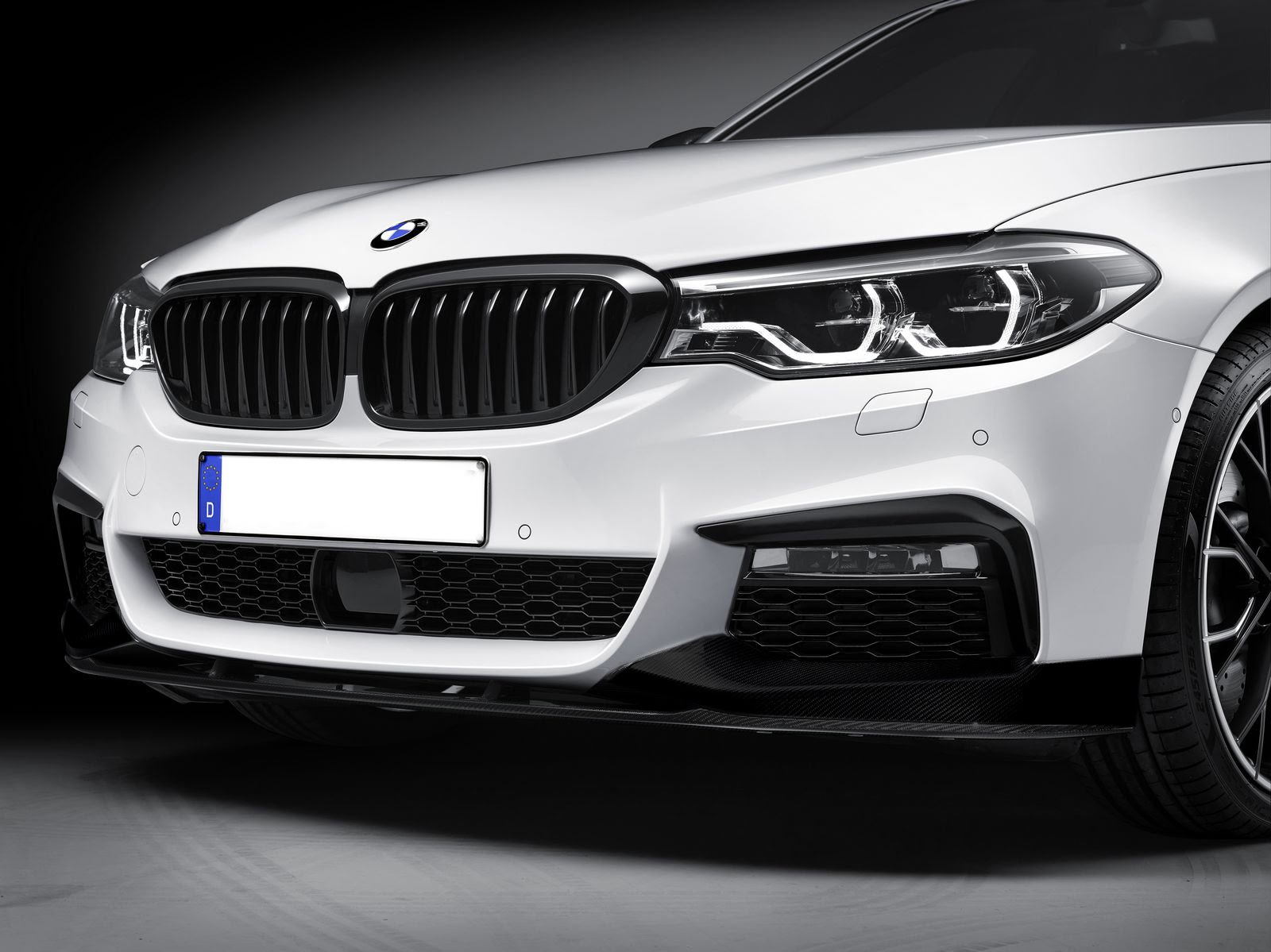
Photo on icetronix.com
One of the easiest ways to change the stock look of your car is by installing a body kit. A body kit is a set of modified car body parts or extra components that are fixed on a factory or stock car body. Body kit components are made to complement each other and work together as a whole. Despite this, there are those who prefer a mix and match approach, where the front of one kit is matched with the rear of another one, for instance. Body kits can also improve the performance of your car
Components of a car body kit
Front and rear bumpers
These are structures attached to the front and back of a car to absorb the impact in minor collisions to reduce repair costs.
Side skirts
These are add-ons that are put on the side of the car to the car look bigger and bolder. It also reduces the turbulence and uses the air produced while the car is running to boost the vehicle’s performance capabilities.
Bumper lips
These are spoilers that are attached to the rim of the front or rear of the car.
Bumper canards
They are also known as dive plates that are put on a car to change its aerodynamic characteristics and help generate downforce and enhance the grounding effect.
Bumper diffusers
They improve the movement of high-velocity airflow from under the car with the slower free-streaming atmosphere.
Bumper splitters
These increase the downforce at the front of the car.
Bumper skirt grilles
They are grilles that fill the opening in a bumper.
Fenders
They are also called wings. They frame the wheel arches and can also help prevent debris from being thrown into the air by the car wheels. Fender flares and fenders with vents are some of the variations of car fenders available.
Widebody fenders and quarter panels
Tthey allow wider wheels to be fitted in a car.
Spoilers
They are automotive aerodynamic devices used to disrupt unfavorable airflow across the car body while in motion, that turbulence or drag
Custom Bonnets/hoods
They cover and protect the engine parts.
Bonnet, Side and Roof scoops
They have raised components either on the hood, side or roof of a car that allows air in.
Side guards
These are rails or raised flat surfaces mounted between or in front of the wheels of large cars to protect cyclists or pedestrians from crashing into the rear tires of the car.
Window Louvers
These visually enhance the performance-look of a car, giving you more privacy and block the sun keeping the interior cool.
One piece for the front or rear
These are the single kit components that either go on the front or back of the car. They are usually one composite piece.
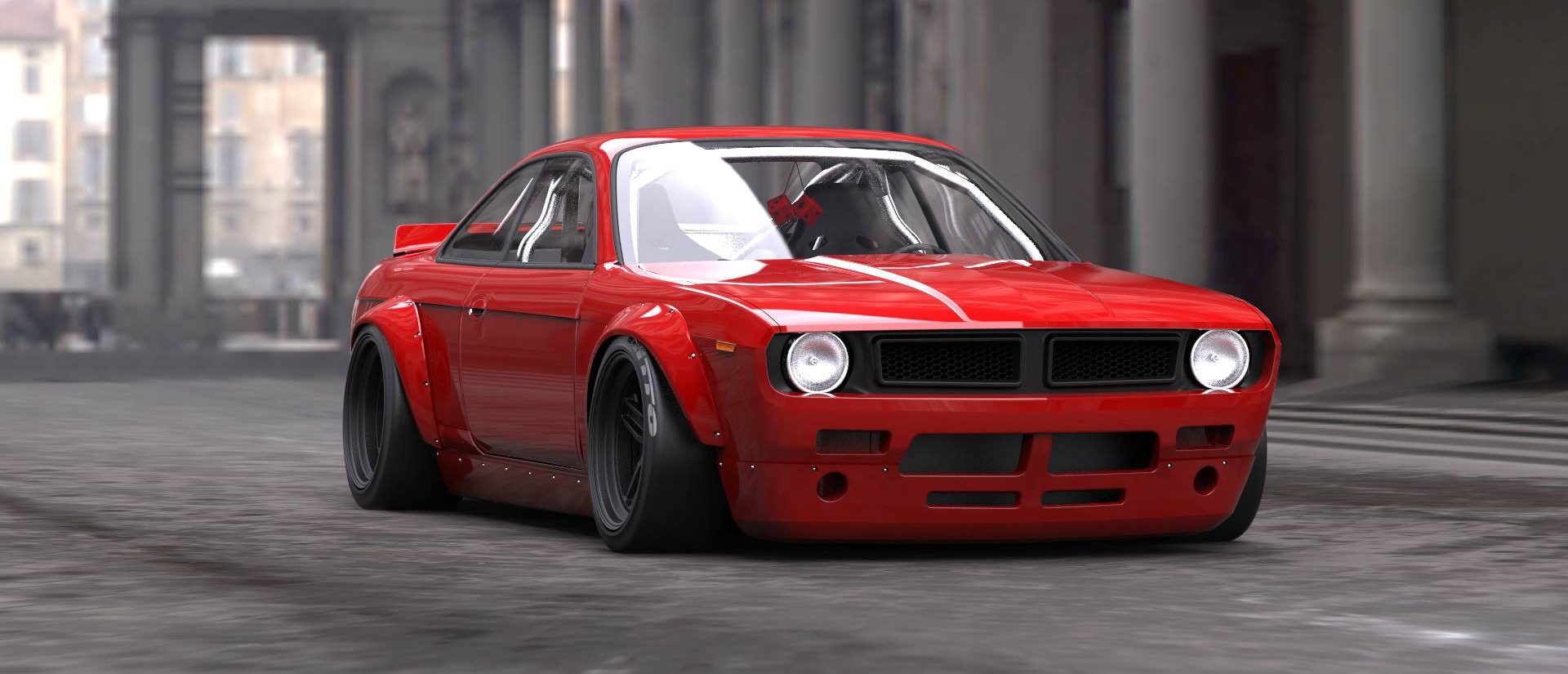
Photo on thenewswheel.com
What is the car body kit for?
The primary goal of a body kit is to make the car more aerodynamic, reducing drag and give the vehicle a unique, appealing look. Installing a body kit on your vehicle can:
- Reshape the exterior of your car from its standard look.
- It adds a touch of style and individuality.
- It improves the performance of the car at high speeds. The front skirt controls airflow around the tires, minimizing drag. The side skirt prevents the air flowing under the car from disturbing the airflow on the side also reducing drag.The rear skirt restricts airflow separation and reduces wake turbulence while the spoiler helps suppress drag and lift that improving the grounding effect. All these components improve the aerodynamic flow of the car, making it go faster and be more fuel efficient.
- They can make some cars safer by making it more stable.
- The downside is that they can be quite pricey. From the buying to installation and painting.
- If you order the parts online, there is a chance they will not fit your car well and even though they are cheaper, you will end up spending more as you cannot return them once you have tried installing them onto the car.
Mounting the body kit parts will need a professional unless you have the skills required.
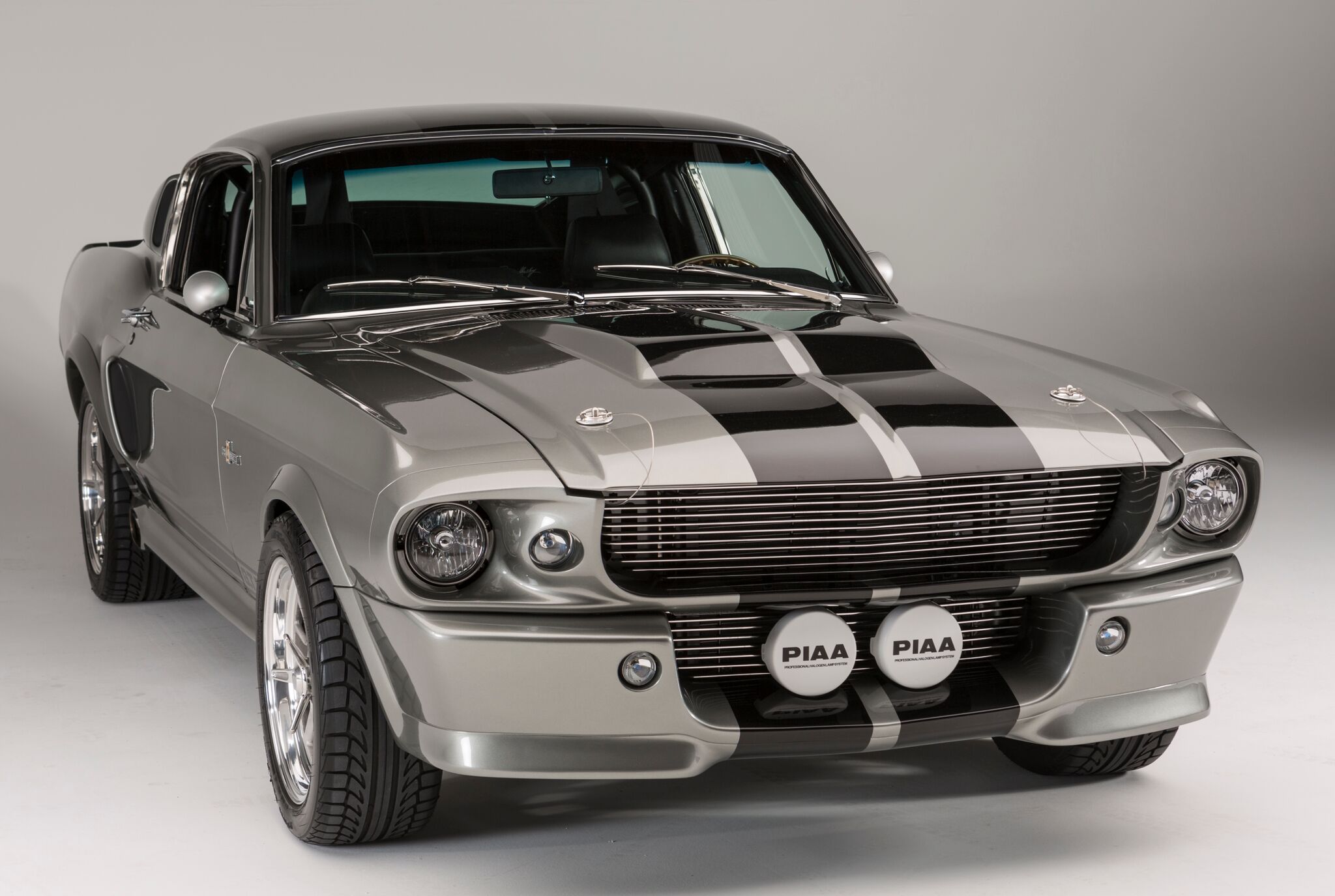
Photo on maierracing.com
Body Kit Buying Tips
Below are the factors to consider when getting a body kit
The body kit materials
The weight and ability of the kit are dependent on the material it is made of. Body kits are made from a range of materials such as fiberglass, polyurethane, ABS plastic, carbon fiber, and composite. Each material has its advantages and disadvantages.
The body kit manufacturer
Do some research on the company that makes the body kit you want before purchase. Find out about the materials they use, if they have a warranty and what it covers. You will also need to know what, if any, modifications will need to be done to the car for the kit to fit well. If the kit requires the removal of factory parts, it is best to avoid them as it may affect the safety of your car.
The budget – You will need to decide how much you are willing to spend on. Knowing what materials to go for can help reduce the budget, as some materials are cheaper. Getting some parts instead of a full body kit can also reduce the overall cost.
The body kit components
The parts available in a kit are dependent on the maker of the kit and your car model. Most kits often include bumpers, spoilers, and side skirts, but other parts like scoops and side guards are also available. It is unnecessary to use all the parts. Only go for those that help create the look you want. Find out if the parts require replacement or just attaching them to the car. For instance, a lip kit allows for easy attachment and removal of components while a bumper kit requires the removal of the old bumper.
The car insurance
Adding body kits to your car can be classed as a modification to the car, which your car insurer may have specific rules on. It is wise to go through the insurance policy terms before modifying your car. This will ensure you do not breach any terms and void the policy.
The resulting look – While looking for body kits, you should have an idea of the look you want. Do you want a more sleek car? Do you want to turn your car into a race car? or do you want your car to grab attention? When deciding what look to go for:
Consider the effect the body kit will have
A sleek, crisp design will improve the appearance of your car while making the car stand out. A performance-based kit will enhance the car’s performance, but it may also attract the police. An extravagant body kit design will attract a lot of attention.
Think of the car’s resale value
How will the final look of your car affect buyer, if you choose to sell your car. The extreme look has the lowest potential buyer pool. More people favor race-ready vehicles for the sporty look and feel they have. A sleek, sultry design may in some ways increase the resale value of your car as it makes it look like a posh vehicle.
Decide if you will paint it or not
You can choose to leave the kit as it is, paint it a contrasting color or match it to the paint of the car. You can purchase kits pre-painted to the exact color code of your car.
The performance of the car
If the car’s performance is important, opt for performance-enhancing kits made of the right materials.
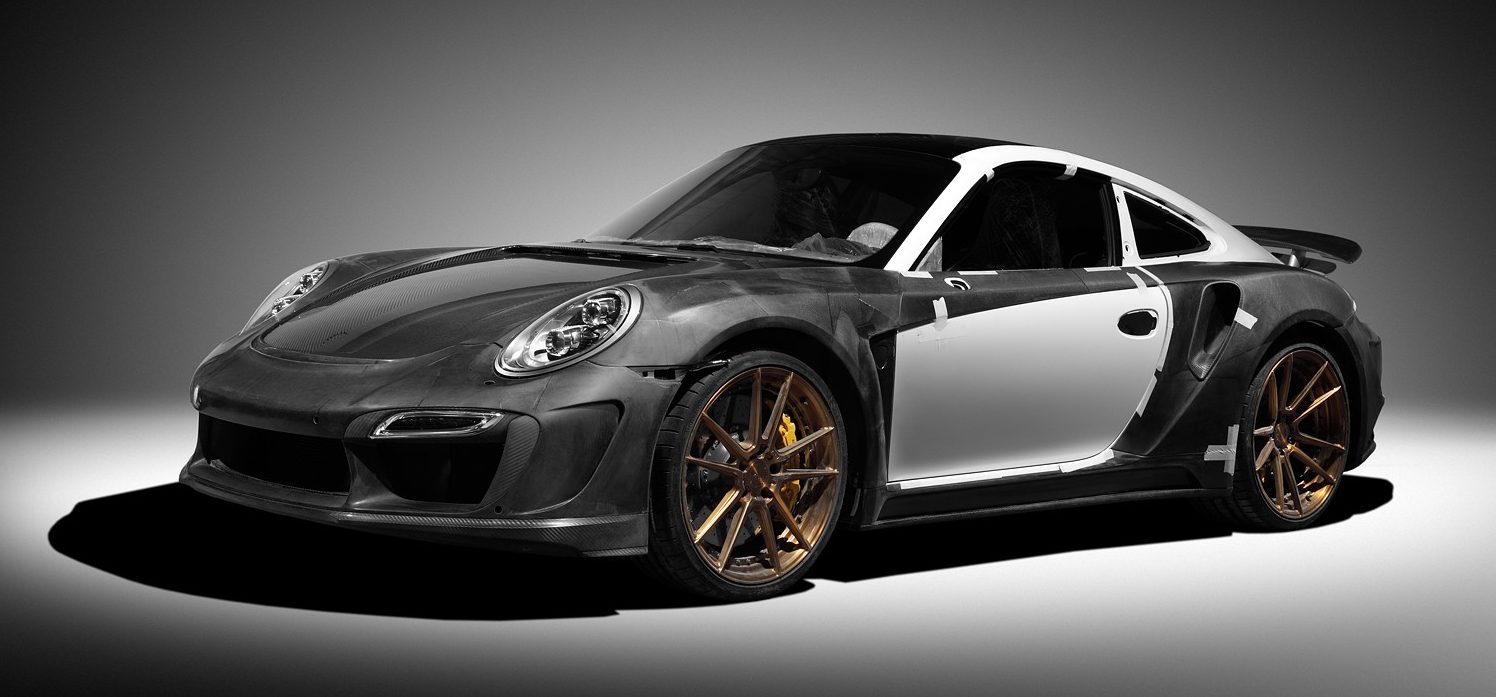
Photo on topcar-design.com
What are body kits made of?
Choosing car body kit materials
Your car body kit can be just for dressing up the car or it can be a performance upgrade. In this case, the material you choose can have different effects on the performance of the car. There are some things to factor in:
Decide if the body kit you want is a performance upgrade
Carbon fiber is fragile, but it is also the best choice when it comes to improving performance due to its lightweight properties. These body kits enhance downward force and aerodynamics of the car so be sure to get a kit specifically designed for this. These body kits are however not often seen on street-used cars. They are common on race cars.
Decide if the body kit you want is for looks alone
If all you care for are the looks of the car, you can opt for a polyurethane kit. Because they are plastic, they can be molded to an exact fit and are very durable. Decide if you want to mix both performance and looks. Using fiberglass is ideal for a custom look and since it is lightweight, it improves the car’s operational capacity.
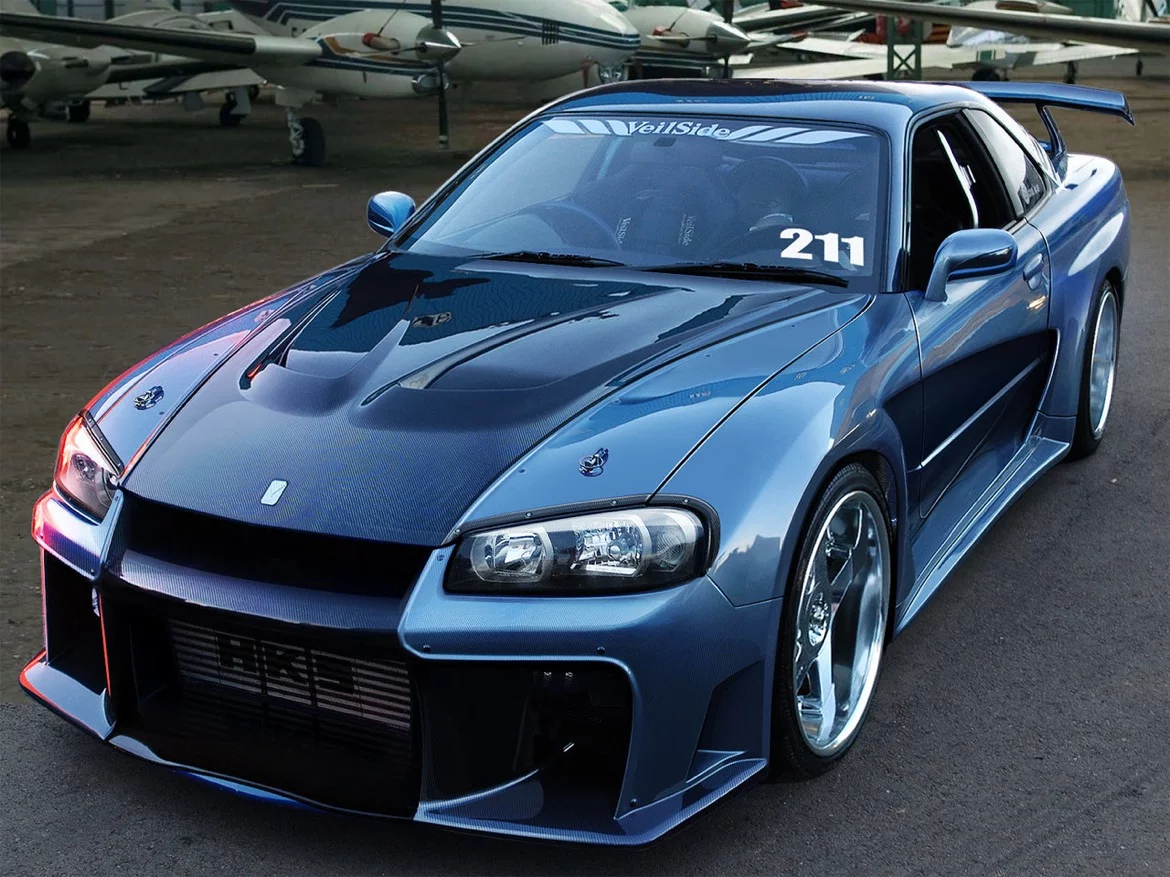
Photo on yandex.com
Materials
Body kit components come in fiberglass, polyurethane, ABS plastic, carbon fiber, and composite. Most makers specialize in one or two of the materials, while others offer a wider range. Below is a list of the characteristics of each to help you choose the right one for you:
Fiberglass – Fiberglass is a type of reinforced material made of glass fibers embedded in a resin matrix.
Pros:
- Relatively easy to produce
- Inexpensive to buy.
- It is lightweight.
- It is not affected by temperature changes which can sometimes cause warping of other materials.
- Paint readily sticks to it.
Cons:
- Its as-delivered fit and finish may not match those of other materials.
- It is not flexible making installation hard and can leave the finished product prone to breakage.
- The parts need extra finishing to make them look good as they are rougher in texture.
- Can be easily damaged by road hazards and debris.
- The relatively inexpensive nature of fiberglass lends itself to poor, cheap parts available in the market.
Polyurethane – It is also known as Urethane and it is a polymer popular for body kit materials.
Pros:
- It is durable
- It is very flexible and therefore more resistant to damage from minor impact.
- The kits are easy to install and maintain
- The parts are also affordable
- Is a true elastomer, so unlike plastic it is not brittle and will retain its elasticity and strength when stretched.
Cons:
- It is heavier than fiberglass or carbon fiber.
- It may be flexible but to make it ready for road use more material is used. This increases the weight of the kit and for a performance upgrade, this can be problematic.
- Damage is harder to repair as it cannot be patched and the whole part will have to be removed and replaced.
- Even though the finished surface is smoother, it still needs extra preparation for the paint to adhere well without flaking or peeling
- It is prone to warping under extreme heat.
ABS plastic – Acrylonitrile butadiene styrene often referred to as ABS is a thermoplastic blend that combined the strength and hardness of acrylonitrile and styrene polymers with the vigor of polybutadiene rubber.
Pros:
- It is chemical and heat resistant
- It offers excellent protection from dents.
- Paint adheres to it well.
Cons:
- It is more expensive and heavier than fiberglass
- It is less flexible than polyurethane
Carbon Fiber – It is a carbon reinforced polymer-like epoxy that is strengthened by actual carbon fibers. Carbon fiber gets its distinctive appearance because of the fibers in the polymer.
Pros:
- They are very strong and lightweight, making them ideal for race cars or any applications that require strength but still be lightweight
- They are valued for their looks and high-performance look. The parts come clear coated and do not need to be painted unless you want to.
Cons:
- It is costly to produce compared to other materials. This should not deter you from using them as they can be mixed with other parts from other materials. For example, you can get urethane front and rear spoilers, air dams, and side skirts and then get a carbon fiber hood.
Composite – It is a combination of materials used to create a product that has all the benefits of the constituting materials that could not be achieved individually. The most popular example is Duraflex. It is made up of fiberglass, plastic, and resins that result in a more flexible more durable material.
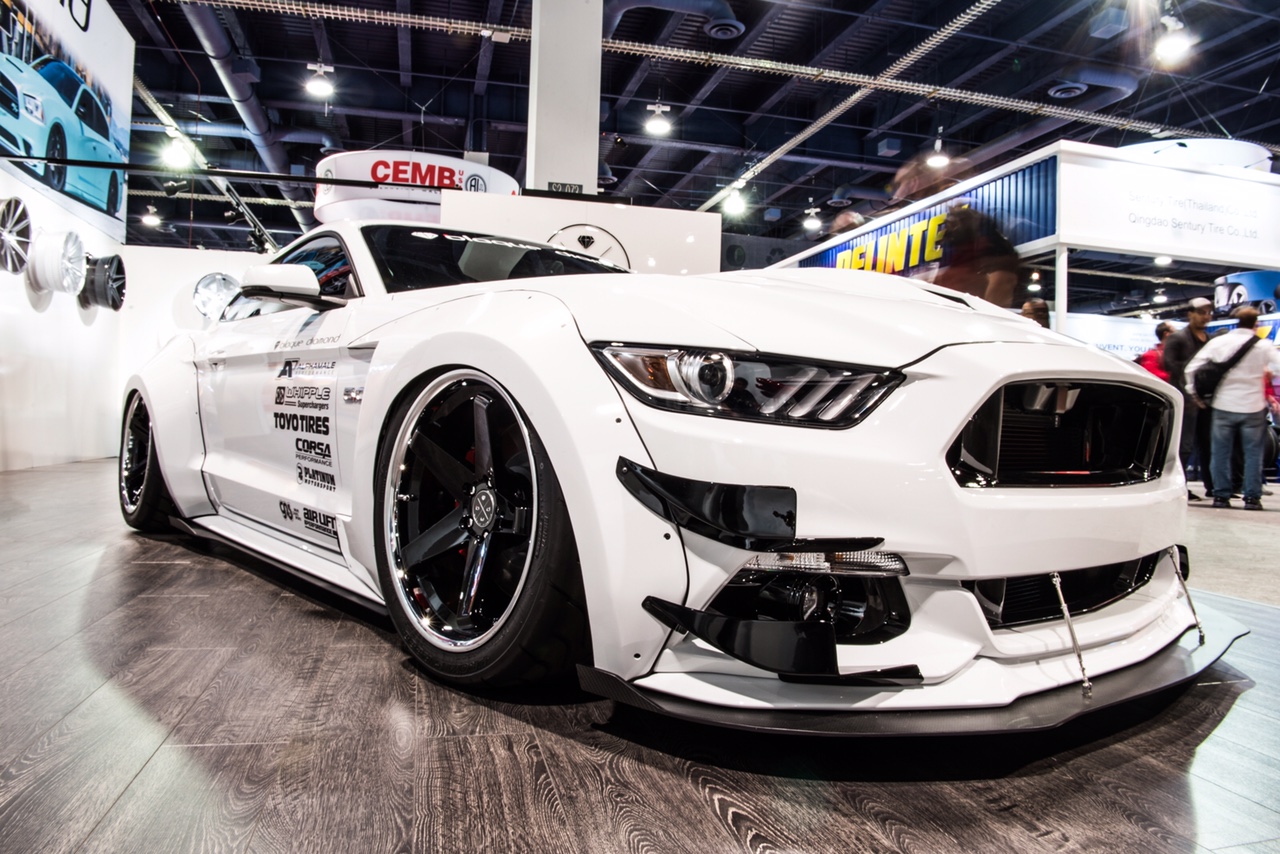
Photo on alphamale-performance.com
How to install a car body kit
Putting in body kits
First, follow the following steps to help you choose a body kit
- First set a budget – this will help you spend within your range and also to narrow down on your options. Also factor in the installation costs and possible shipping costs.
- Settle on a look – whether it is sleek, sporty, aggressively bold and show-stopping, there is a body kit for you. If performance is key take note of the weight of the parts and aerodynamic features too.
- Have a good understanding of the materials – this affects the pricing, weight, durability, repairability, and performance of the parts.
- Choose the parts to fit – now you have a better understanding of the factors above you can decide what components to add. Choose whether to go for a full kit or just some parts.
- Finally be sure to talk to your insurer before getting anything done.
Body kit installation
How much would it cost to install a body kit
The average price of a body kit varies as there are many kinds of kits to choose from. Depending on the material and whether it has performance enhancing components it can range from $6,000 to $50,000. On average, a kit can cost about $12,000 this price is not inclusive of installation.Once you have decided on the kit, you like and have purchased and inspected it follow the steps below to fit it onto your car.
- Prep the kit for installation
- Pre-paint the pieces if you do not plan to paint the whole car. Be sure to get the right paint colors that match the car. The kit will have a brand new look so wax and detail the rest of the car to match.
- Remove the stock items that will be replaced by the kit components. This includes the side skirts and bumpers. On some car models, this can be challenging and require specialized tools.
- Clean the exposed surfaces with degreaser or lacquer thinner. Avoid leaving prolonged contact of the thinner as it would damage the car’s paint surface. This prevents the built-up dirt and grime from damaging the kit.
- Layout the kit pieces and line them up near the areas they are to be mounted. Make sure all the screws, holes and other features align.
- Mount and attach all the pieces starting with the front bumper. With some kits, the side skirts are connected first to prevent overlapping with the bumper. It is advised to start at the front working your way back. This helps the components flow and line up with the car.
- Make sure the front lines up with the grille and the headlights. Install and change the side skirts so that it lines with the front bumper and fenders. Match up the rear bumper with the side skirts and the tail lights.
- After completing the installation check the doors clearances to ensure the paint does not rub
Risks involved with installing body kits
- They can affect the resale value of your car
- They can void your car warranty and insurance policy
- Improper installation or fit can damage the car body
- They can draw unwanted attention especially form law enforcement.
We hope this post aids you in making a more informed choice.